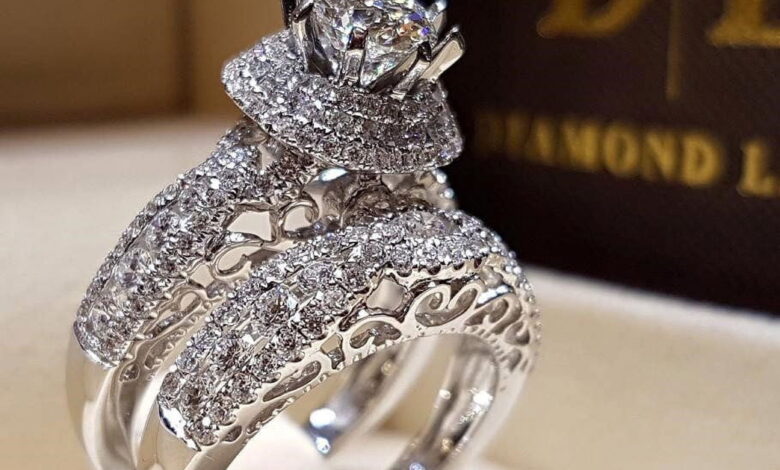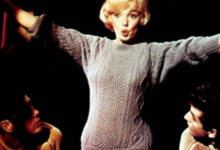The Timeless Allure of the Diamond Ring A Symbol of Love and Elegance

Regarding iconic symbols of love and commitment, nothing captures the heart quite like a diamond ring. From ancient traditions to modern proposals, this precious piece of jewelry holds a special place in the hearts of millions worldwide. In this article, we’ll explore the diamond ring’s history, significance, and enduring appeal while delving into what makes it such an irreplaceable treasure in human culture.
The Origins of the Diamond Ring: A Story Through the Ages
diamond ring The tradition of wearing rings as symbols of commitment dates back thousands of years. However, as we know it today, the diamond ring emerged from a long and fascinating history. Ancient Egyptians were among the first to use rings as symbols of eternal love. They believed that a vein ran directly from the fourth finger of the left hand to the heart, which gave rise to the modern custom of wearing wedding and engagement rings on that finger.
It wasn’t until 1477 that diamonds became associated with romantic commitment. The Archduke Maximilian of Austria presented a diamond ring to Mary of Burgundy, sparking a trend among European aristocracy that forever linked diamonds with love and marriage. Over the centuries, this tradition spread across cultures and classes, cementing the diamond ring as an essential part of romantic rituals.
Why Diamonds? The Unique Appeal of the Diamond Ring
Diamonds are more than just dazzling gemstones—they are symbols of strength, eternity, and resilience. Their unmatched durability, reflected in their ranking as the hardest natural substance on Earth, makes them a fitting representation of everlasting love. A diamond’s brilliance and fire also evoke a sense of timeless beauty, further elevating the diamond ring as the ultimate emblem of commitment.
In addition to their symbolic significance, diamonds have an undeniable aesthetic appeal. Their ability to refract light into a spectrum of colors creates a breathtaking sparkle that has captivated people for generations. When set in a diamond ring, this natural brilliance transforms the jewelry into an elegant and meaningful statement piece.
The Modern Meaning of a Diamond Ring
While the diamond ring has deep historical roots, its meaning has evolved. Today, it is most commonly associated with engagements and weddings. An engagement ring featuring a diamond is often seen as a promise of marriage, while a wedding band with diamonds symbolizes the enduring bond between two individuals.
Beyond its role in romantic relationships, the diamond ring has also become a symbol of self-expression and personal achievement. More and more people are purchasing diamond rings for themselves to celebrate milestones, accomplishments, or simply their unique style. This shift reflects a growing appreciation for diamonds as versatile and meaningful gemstones that transcend traditional gender roles and societal expectations.
Choosing the Perfect Diamond Ring: What to Consider
Selecting a diamond ring is a highly personal process, and several factors must be considered to ensure you find the perfect piece. Here are some key elements to keep in mind:
1. The 4 Cs: Cut, Color, Clarity, and Carat
These four characteristics determine the quality of a diamond:
- Cut: The cut of a diamond affects its brilliance and sparkle. A well-cut diamond reflects light beautifully, creating a dazzling display.
- Color: Diamonds are graded on a scale from D (colorless) to Z (light yellow or brown). Colorless diamonds are the most desirable, but faintly colored diamonds can also have a unique charm.
- Clarity refers to imperfections or inclusions in a diamond: the fewer the inclusions, the more valuable the stone.
- Carat: Carat weight determines the size of the diamond. While larger diamonds are often more expensive, smaller stones with excellent cut and clarity can be equally stunning.
2. The Setting
The setting of a diamond ring plays a significant role in its overall design. Popular settings include:
- Prong setting: Elevates the diamond, allowing maximum light for enhanced brilliance.
- Halo setting: Surrounds the central diamond with smaller stones, creating a more significant, more luminous appearance.
- Bezel setting: Encircles the diamond with metal for a sleek and modern look.
3. Metal Choice
The metal used in a diamond ring setting can significantly impact its aesthetic. Common options include:
- Platinum: A durable and hypoallergenic metal with a bright white finish.
- White gold: Offers a similar look to platinum but at a lower cost.
- Yellow gold: A classic choice that pairs beautifully with warm-toned diamonds.
- Rose gold: A romantic and trendy option with a soft pink hue.
4. Personal Style
A diamond ring should reflect the wearer’s personality and style. Whether you prefer a classic solitaire, a vintage-inspired design, or a modern geometric shape, a diamond ring suits every taste.
The Ethical Side of Diamond Rings: What You Should Know
In recent years, there has been increased awareness about the ethical and environmental concerns surrounding diamonds. Many consumers now seek conflict-free or lab-grown diamonds to ensure their diamond ring aligns with their values.
Conflict-Free Diamonds
Conflict-free diamonds are sourced from mines that adhere to ethical labor practices and avoid funding violence or exploitation. These diamonds are certified under initiatives like the Kimberley Process, which aims to eliminate the trade in conflict diamonds.
Lab-Grown Diamonds
Lab-grown diamonds offer an eco-friendly and affordable alternative to mined diamonds. These stones are chemically and physically identical to natural diamonds but are created in controlled environments. Choosing a lab-grown diamond for your it allows you to enjoy its beauty while minimizing environmental impact.
Caring for Your Diamond Ring: Tips for Longevity
A diamond ring is an investment, both financially and emotionally, so proper care is essential to keep it looking its best. Here are some tips for maintaining your diamond ring:
- Regular Cleaning: Clean your ring regularly with a gentle solution of warm water and mild soap. Use a soft brush to remove dirt and oil from the diamond and setting.
- Avoid Harsh Chemicals: Keep your ring away from bleach, chlorine, and other harsh chemicals that can damage the metal or stone.
- Professional Inspections: Have your ring inspected by a jeweler annually to check for loose stones or damage to the setting.
- Proper Storage: Store your diamond ring in a soft cloth or jewelry box to prevent scratches and maintain its shine.
The Enduring Legacy of the Diamond Ring
The diamond ring is more than just a piece of jewelry—it is a timeless symbol of love, commitment, and individuality. Its rich history, unmatched beauty, and deep cultural significance make it a treasure that will continue captivating future generations. Whether yyou choosea diamond ring for an engagement, a wedding, or a personal milestone, it remains a powerful expression of life’s most meaningful moments.
As trends evolve and ethical considerations emerge, it continues to adapt while maintaining its timeless charm. From ancient traditions to modern celebrations, its brilliance is a testament to the bonds we cherish most.
In conclusion, the it is a testament to love, resilience, and elegance. Whether you wear one as a token of romance or a celebration of self, it remains a sparkling reminder of life’s most cherished connections. So, the next time you see a it, remember that it represents beauty and the stories and emotions that make life truly extraordinary.


